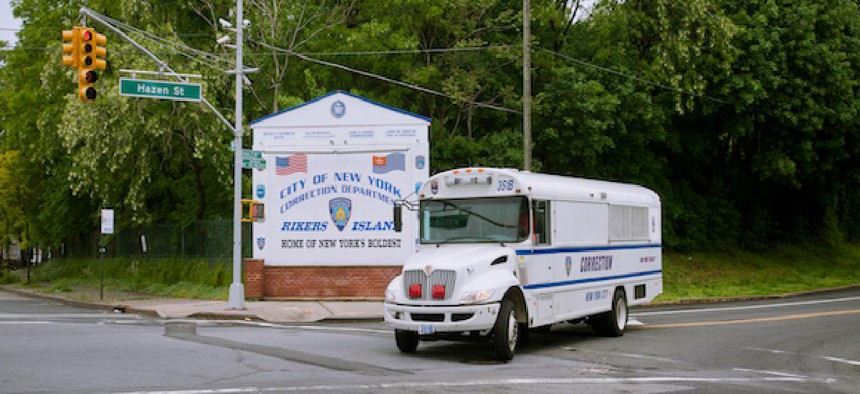Why less is indeed more
Lessons from a successful criminal justice reform campaign.

The entrance to Rikers Island. rblfmr/Shutterstock
This week Gov. Kathy Hochul signed the Less is More Act, which addresses the overuse of incarceration for parole violations, which are non-criminal acts by persons under community supervision – and the reform is long overdue.
A study from the Columbia University Justice Lab found that 40% of new admissions to prisons were not for new crimes but for parole violations. This costs taxpayers an estimated $683 million dollars in 2019.
The success of the Less is More campaign offers a good model for how to get progressive criminal justice reform passed. Organizers were formerly incarcerated people, who are most impacted by the system, and they highlighted the disparate impact of parole violations on Black and brown people and their communities. Their messaging highlighted the lack of equal protection and due process for people accused of a violation and they used compelling data to make the case.
The campaign’s advocates highlighted the disparate impacts of the parole violation process on Black and brown people and communities of color without relying on charges of racism against leaders of criminal legal agencies or politicians. This allowed an impressive list of prosecutors, law enforcement leaders and elected officials, such as the Manhattan District Attorney’s Office and Albany County Sheriff, to join a host of community organizations and advocacy groups from across the state. It is a model that should be emulated in other justice reform efforts because progressive change relies in part on convincing elected officials and voters who are more ambivalent about reforms.
The leadership of people who were previously incarcerated and subject to parole violations was essential to the Less is More effort. Their stories were vital to raising awareness of the campaign. They spoke not only of the need to reform the violation process, but also of the need to invest in the people and communities most impacted by mass incarceration. No serious criminal legal reform effort can be effective without the talented leadership of people who are most impacted by the system.
The campaign’s messaging also included a focus on the unfairness of the parole violation process and how the system failed to offer people on parole equal protection and due process under the law afforded to any other defendant in a criminal proceeding. The violations process provides a veneer of due process that is inadequate and often serves as the punishment regardless of the merits of a violation charge. It can take 90 days under the regulation to get a final determination in a parole violation case. All while a person is housed in a local jail like Rikers Island awaiting adjudication.
Consider the case of Raymond Rivera who was housed on Rikers Island in 2020, for many weeks pending the outcome of his parole violations case. Rivera was among the first to die from COVID-19 in New York City as the virus spread throughout Rikers. His violation was lifted a day before he succumbed to the virus. Had Rivera’s violation case been heard in a criminal court before a judge he would have stood at arraignment within 36 hours and had the opportunity to be released pending the final outcomes of his case, or have the case addressed in other ways without the need for further incarceration. More recently, Isaabdul Karim died while being held at Rikers on a parole violation. His death highlights the persistent inhumane conditions that many persons detained for minor offenses or non-criminal parole violations face on Rikers.
Finally, the campaign presented compelling data on the effectiveness and expense of the parole violation process. This was important because many New Yorkers and elected officials who might be unmoved by the moral argument for reform could clearly see that this wasteful government process did not produce good public safety outcomes. In fact, there is scant evidence that incarceration for parole violations enhances public safety, there is however ample evidence that increased incarceration raises one’s risk for further recidivism, a decline in their mental health and can reduce their lifetime earnings.
There are other benefits to this reform that should be noted. For many nonprofits that work with people coming home, and many employers who provide jobs for returning community members, parole violations are disruptive. Removing someone from the community interferes with efforts to help them get a job, get treatment and secure housing. Employees that are removed often cannot communicate their circumstances to their employer. This disrupts the employer's business and discourages hiring of job seekers on parole in the future.
We must acknowledge the racist legacy of New York State’s criminal legal system as we work to create meaningful change. The Less is More Campaign proves that this is possible.